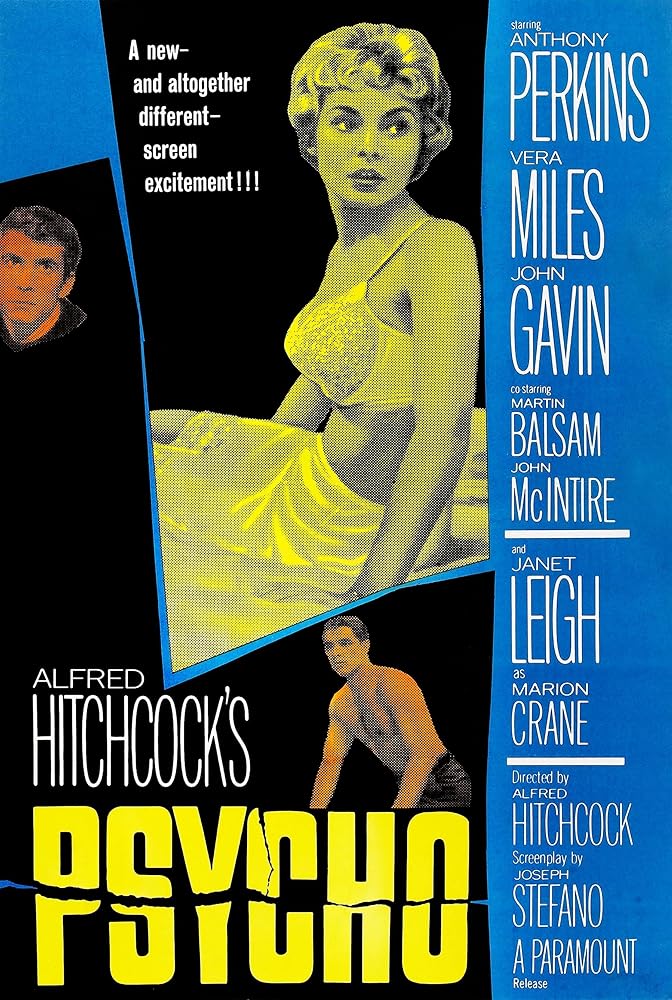
PSYCHO
(director: Alfred Hitchcock; screenwriters: from the book by Robert Bloch/Joseph Stefano; cinematographer: John L. Russell; editor: George Tomasini; music: Bernard Herrmann; cast: Anthony Perkins (Norman Bates), Janet Leigh (Marion Crane), Vera Miles, (Lila Crane), John Gavin (Sam Loomis), Martin Balsam (Milton Arbogast, detective); Runtime: 120; MPAA Rating: R; producer: Alfred Hitchcock; Universal Studios Home Video; 1960)
“Alfred Hitchcock’s most popular, influential and best film.”
Reviewed by Dennis Schwartz
Alfred Hitchcock’s most popular, influential and best film. Hitchcock’s first horror film was a sadistic black comedy shot in black-and-white. It was daring in its break with mainstream conventions regarding sex (Janet Leigh in her undies) and madness (the sickness is within), but was slashed by the critics on its release. But it became a big box-office hit anyway and spawned many copycats, and created a new genre – the slasher movie. Halloween, modern days’ most famous slasher film, came later and only re-invented the slasher genre.
The thriller is based on Robert Bloch’s novel Psycho, upon which screenwriter Joseph Stafano provided the script. Bernard Herrmann offers the eerily bouncy musical score.
The attractive blonde Marion Crane (Janet Leigh) is an unhappy camper at her office job at a Phoenix, Arizona real estate office and unhappy in her romance with hardware store manager Sam Loomis (John Gavin). When one afternoon the trusted Marion is given $40,000 in cash to be deposited in the bank, she impulsively goes on the run with the stolen company money thinking this will give her enough of a head start to begin her life over again somewhere else. Becoming exhausted and increasingly more frightened after being on the lam for over a day, the neophyte criminal stops for the night at the secluded and deserted Bates Motel. She’s greeted by the friendly but nervous motel keeper Norman Bates (Anthony Perkins), who cheerfully mentions that she’s the first guest in weeks. As the lonely Norman serves her a meal he talks about his beloved mom, and in further conversation he also gets her thinking about life’s traps. The paranoid woman decides that stealing the money wasn’t such a good idea, and decides to get a good night’s sleep and tomorrow to give back the stolen money in Phoenix. But things take a different turn when she gets into the shower, the most famous slasher scene ever filmed. After the unfortunate heroine is dispatched with in a most hygienic Gothic way, the film turns its attention on the sick mind of Norman and the chilling conversations he has with the domineering specter of his mother about loose women. Hitch’s mordant humor shines at its most playful when Perkins says “Mother’s not herself today.”
The Master of Suspense’s 1960 masterpiece on its more serious side explored schizophrenia and its debilitating effects as only Hitchcock could, without being too clinical. It offers a change in the way an audience watches a horror film from now on and blends that more active viewing attitude in with a titillating allusive visual style to create a shocking and morally disturbing film.
REVIEWED ON 5/27/2004 GRADE: A+